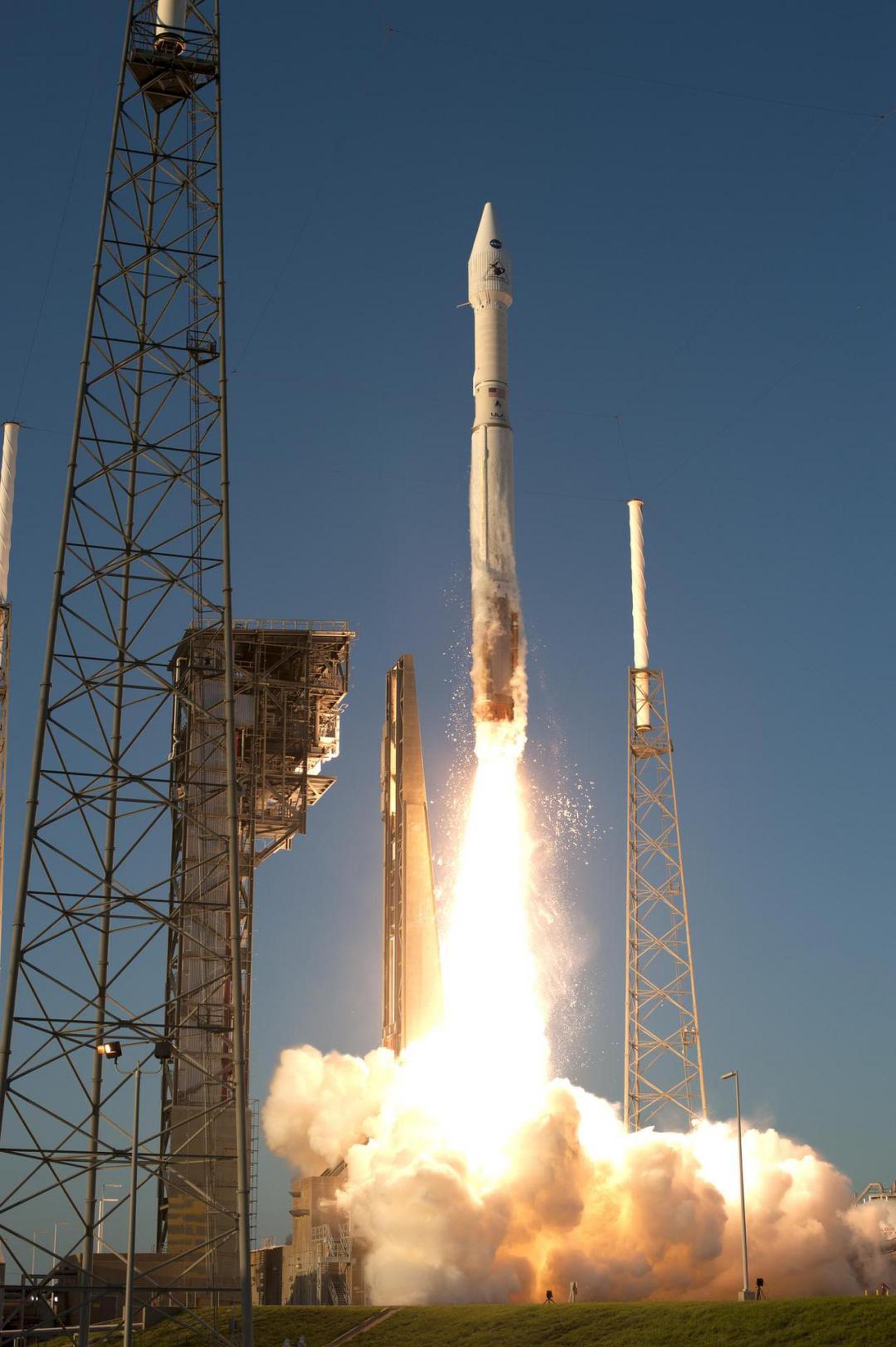
Atlas V 411
ActiveUnited Launch Alliance (ULA)
April 20, 2006
Description
Atlas V with 4m fairing, 1 SRB, 1 Centaur upper stage engine.
Specifications
-
Max Stage
2 -
Length
58.3 m -
Diameter
3.8 m -
Fairing Diameter
― -
Launch Mass
― -
Thrust
― -
Apogee (Sub-Orbital)
40000.0 km
Family
-
Name
Atlas V 411 -
Family
― -
Variant
411 -
Alias
― -
Full Name
Atlas V 411
Payload Capacity
-
Launch Cost
$115000000 -
Low Earth Orbit
8080.0 kg -
Geostationary Transfer
Orbit
5950.0 kg -
Direct Geostationary
1935.0 kg -
Sun-Synchronous Capacity
―
United Launch Alliance
Commercial
Interim CEO: John Elbon
ULA 2006United Launch Alliance (ULA) is a joint venture of Lockheed Martin Space Systems and Boeing Defense, Space & Security. ULA was formed in December 2006 by combining the teams at these companies which provide spacecraft launch services to the government of the United States. ULA launches from both coasts of the US. They launch their Atlas V vehicle from LC-41 in Cape Canaveral and LC-3E at Vandeberg. Their Delta IV launches from LC-37 at Cape Canaveral and LC-6 at Vandenberg.
Atlas V 411 | Solar Orbiter
United Launch Alliance | United States of AmericaCape Canaveral SFS, FL, USA
Feb. 10, 2020, 4:03 a.m.
Status: Launch Successful
Mission:
Solar Orbiter is a joint ESA/NASA mission dedicated to solar and heliospheric physics. It will be used to examine how the Sun creates and controls the heliosphere, the vast bubble of charged particles blown by the solar wind into the interstellar medium. The spacecraft will combine in situ and remote sensing observations to gain new information about the solar wind, the heliospheric magnetic field, solar energetic particles, transient interplanetary disturbances and the Sun's magnetic field. Instruments include: * Solar Wind Analyser (SWA) * Energetic Particle Detector (EPD) * Magnetometer (MAG) * Radio and Plasma Wave analyser (RPW) * Polarimetric and Helioseismic Imager (PHI) * Extreme Ultraviolet Imager (EUI) * Spectral Imaging of the Coronal Environment (SPICE) * Spectrometer Telescope for Imaging X-rays (STIX) * Coronagraph (Metis) While mission is not intended to get as close to the Sun as Parker Solar Probe, it's designed to coordinate observations and has different set of instruments. Main mission starts after one and only Earth flyby in November 2021, and lasts until Dec 2026 when it enters extended phase. During the mission, Solar Orbiter will get through numerous Venus gravity assists, and its trajectory will be highly inclined allowing direct observations of Sun's poles.
Heliocentric N/A #SolOAtlas V 411 | SBIRS GEO Flight 4 (SBIRS GEO-3)
United Launch Alliance | United States of AmericaCape Canaveral SFS, FL, USA
Jan. 20, 2018, 12:48 a.m.
Atlas V 411 | OSIRIS-REx
United Launch Alliance | United States of AmericaCape Canaveral SFS, FL, USA
Sept. 8, 2016, 11:05 p.m.
Status: Launch Successful
Mission:
The Origins-Spectral Interpretation-Resource Identification-Security-Regolith Explorer (OSIRIS REx) mission will be the first U.S. mission to carry samples from an asteroid back to Earth and will help scientists investigate how planets formed and how life began, as well as improve our understanding of asteroids that could impact Earth.
Heliocentric N/AAtlas V 411 | NROL-34 (2 x NOSS (USA-229))
United Launch Alliance | United States of AmericaVandenberg SFB, CA, USA
April 15, 2011, 4:24 a.m.
Atlas V 411 | NROL-28 (USA-200)
United Launch Alliance | United States of AmericaVandenberg SFB, CA, USA
March 13, 2008, 10:02 a.m.
Atlas V 411 | Astra 1KR
United Launch Alliance | United States of AmericaCape Canaveral SFS, FL, USA
April 20, 2006, 8:27 p.m.
Status: Launch Successful
Mission:
SES ASTRA ordered two new Astra satellite in June 2003. The satellites, designated Astra 1KR and Astra 1L will provide distribution of direct-to-home broadcast services across Europe following their scheduled launches in the second half of 2005 and 2006 respectively. Astra 1KR, an all Ku-band spacecraft with 32 active transponders, will be located at 19.2 degrees East longitude. Both spacecraft will be based on the award winning A2100AXS platform, manufactured by Lockheed Martin Commercial Space Systems, Newtown, Pa., and each will have a minimum service life of 15 years.
Geostationary OrbitSoyuz 2.1a
Obzor-R No.1
43/4 (43R) - Plesetsk Cosmodrome, Russian FederationNote: Assignment of payloads to this launch is uncertain. The Russian Obzor-R satellite is a planned X-band radar earth observation satellite desi…
LVM-3 (GSLV Mk III)
BlueBird Block 2 #1
Satish Dhawan Space Centre Second Launch Pad - Satish Dhawan Space Centre, IndiaAST SpaceMobile’s Block 2 BlueBird satellites are designed to deliver up to 10 times the bandwidth capacity of the BlueBird Block 1 satellites, requi…
Long March 12A
Demo Flight
Long March 12A Pad - Jiuquan Satellite Launch Center, People's Republic of ChinaFirst test launch of CASC/SAST’s Long March 12A rocket, with a dummy payload. The rocket’s 1st stage attempted to land on a landing pad about 300 km …
HANBIT-Nano
Spaceward
HANBIT Pad - Alcântara Space Center, Federative Republic of BrazilMaiden orbital launch attempt for the South Korean start-up Innospace and its HANBIT-Nano small launch vehicle. Onboard this flight are five small sa…
H3-22
Michibiki 5 (QZS-5)
Yoshinobu Launch Complex LP-2 - Tanegashima Space Center, JapanQZSS (Quasi Zenith Satellite System) is a Japanese satellite navigation system operating from inclined, elliptical geosynchronous orbits to achieve o…

